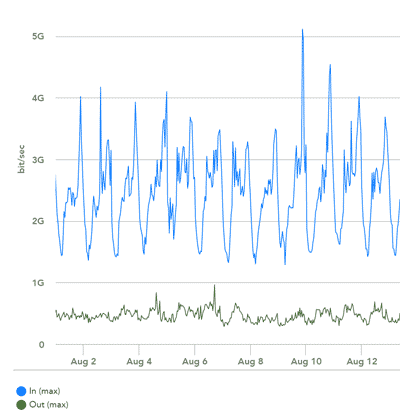
Internet Uplink(s)
A very important and potentially limiting factor in your design is how expensive your Internet uplink(s) will be. Depending on how close you are to existing long haul fiber networks, a modest link speed could be very expensive, or you could get all the bandwidth you need for a modest monthly fee.
Your uplink bandwidth is always going to be a small fraction of your aggregate access network bandwidth. 1000 customers, each with 1 Gbps links, would comfortably fit into a 10 Gbps uplink in 2018. As your network grows larger, this ratio gets better as statistical smoothing means you have less utilization per customer. ie. only a fraction of customers are using the Internet at any one time.
If fiber bandwidth in your area is expensive, then the question is, how much do you really need? In 2016, the Anza network found that they could support 300 users with only 300 Mbps of total uplink bandwidth. Another bandwidth constrained network, Sea Ranch in northern California, initially used a 1 Gbps uplink for 1,000 customers in 2016. Today, you'd probably want to budget something like a minimum of 1.5 Mbps per customer on a bandwidth constrained network. If bandwidth is relatively cheap in your area, then plan on a much large bandwidth allocation per customer, more in the 10 Mbps per customer range.
Here's data from a small ISP serving 700 customers. Peak rates (early evening) hit 5 Gbps yielding an average peak rate of about 7 Mbps
per customer.

Ideally, you will want two or more separate routes to the Internet for redundency reasons. A backhoe accident 500 miles away would ruin your day if you were relying on one route. Of course, some networks will have no choice but to use a single link. You can console yourself that most fiber outages last less than a single day - emergency repairs crews are pretty fast.
To find an uplink provider, you can start with the business to business division of the large Internet Service Providers in your area. ie. the same companies that don't want to build out a FTTH network for your community. This is an especially easy path to take for a small community, as the big ISP will take care of a lot of network provisioning. Even if they don't have fiber directly in your community, you might be able to build a fiber line to a nearby location where they do have fiber as part of your FTTH build out.
Alternatively, there are many companies that own long haul fiber networks, either lit or dark, and you might be able to lease a connection to a nearby ISP co-location facility. For example, the Rancho Santa Fe network will be leasing a 10 Gbps fiber link from the edge of the community directly to 1 Wilshire Place in Los Angeles, about 120 miles away. This will give residents very low latency access to a broad selection of Internet services.
How Much Growth?
Total bandwidth usage in the developing world is increasing at a rate of about 20% per year. So, even if you never added a single new customer, expect your bandwidth needs to increase by at least this amount every year. Of course, factor in new subscriber growth too. This has the potential to accelerate, however, as more people start streaming 4K movies, and more people cut the cord and watch TV entirely over the Internet.
Note that peak time usage (just after dinner time), will be 3-4 times what it is during the day.